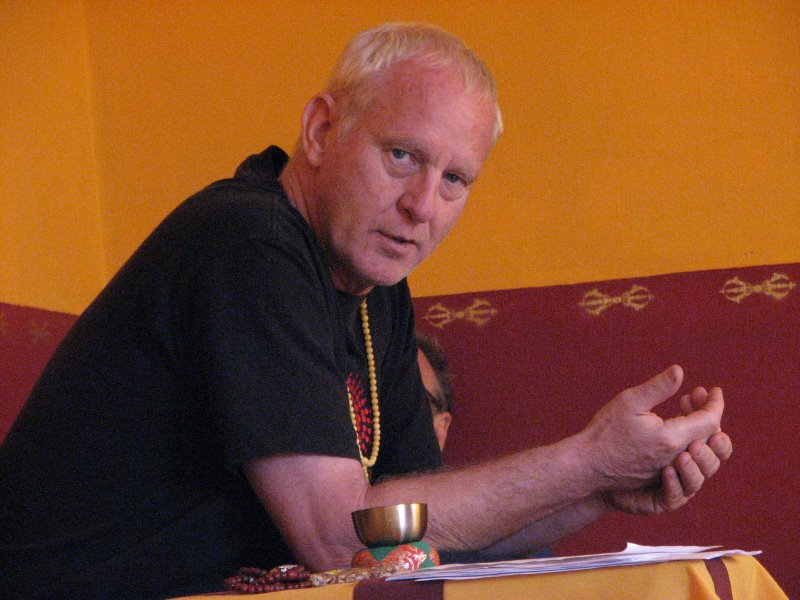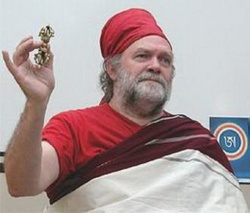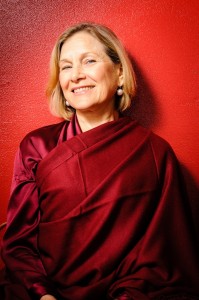The practice of Chenrezig P’howa is the extraordinary Vajrayana method for attaining rebirth in Amitabha Buddha’s pure realm. P’howa means transferring consciousness from one state to another. At the moment of death, the skillful means of the “P’howa of three recognitions” allows us to direct our consciousness out of our body and into the exalted environment of Amitabha’s enlightened mind. Once enlightened, meditative realization and the capacity to benefit others increase to their ultimate potential.
P’howa accomplishment ensures that we will not die in a state of spiritual uncertainty, drifting helplessly in the after-death bardo.This practice provides a consummate method to help others when they die.
Chagdud Khadro has taught the meditation of P’howa, transference of consciousness at the moment of death, for 28 years. Like many Buddhist practitioners, especially in the Tibetan tradition, her teaching is informed by the writings and oral transmissions of such great masters as Chagdud Tulku Rinpoche, Sogyal Rinpoche, the Dzogchen Ponlop Rinpoche, and Tulku Thondup Rinpoche. She has had the opportunity to counsel many in situations of dying and death and has listened to many stories.
Amitabha empowerment will be offered and is required for the P’howa training.
Chagdud Khadro met His Eminence Chagdud Tulku Rinpoche in Nepal in 1978, became his wife in the US in 1979, and remained his devoted student for twenty-three years. At the time of her ordination as a lama in 1997, Rinpoche invested her as the future Spiritual Director of Chagdud Gonpa Brazil. Since Rinpoche’s Parinirvana in 2002, she has focused on maintaining the Vajrayana training that he established. At Khadro Ling, the seat of Chagdud Gonpa Brazil, she has worked with a “miraculously assembled team” (her words) of lamas, artists, and talented sangha members to construct a Guru Rinpoche Palace (Zangdog Palri), publish texts, accomplish projects related to education, spiritual care for the dying, and to preserve and teach Vajrayana ritual arts. She travels, teaches, and leads retreats in the Americas, Europe, and Australia.
Related bibliography:
Phowa Commentary, Chagdud Khadro
Red Tara Commentary: Instructions for the Concise Practice Known as Red Tara, Chagdud Khadro
Lord of the Dance: The Autobiography of a Tibetan Lama, Chagdud Tulku
Ngondro Commentary: Instructions for the Concise Preliminary Practices of the New Treasure of Dudjom, Jane Trogma & Chagdud Tulku
Life in Relation to Death, Chagdud Tulku
Gates to Buddhist Practice: Essential Teachings of a Tibetan Master, Chagdud Tulku



